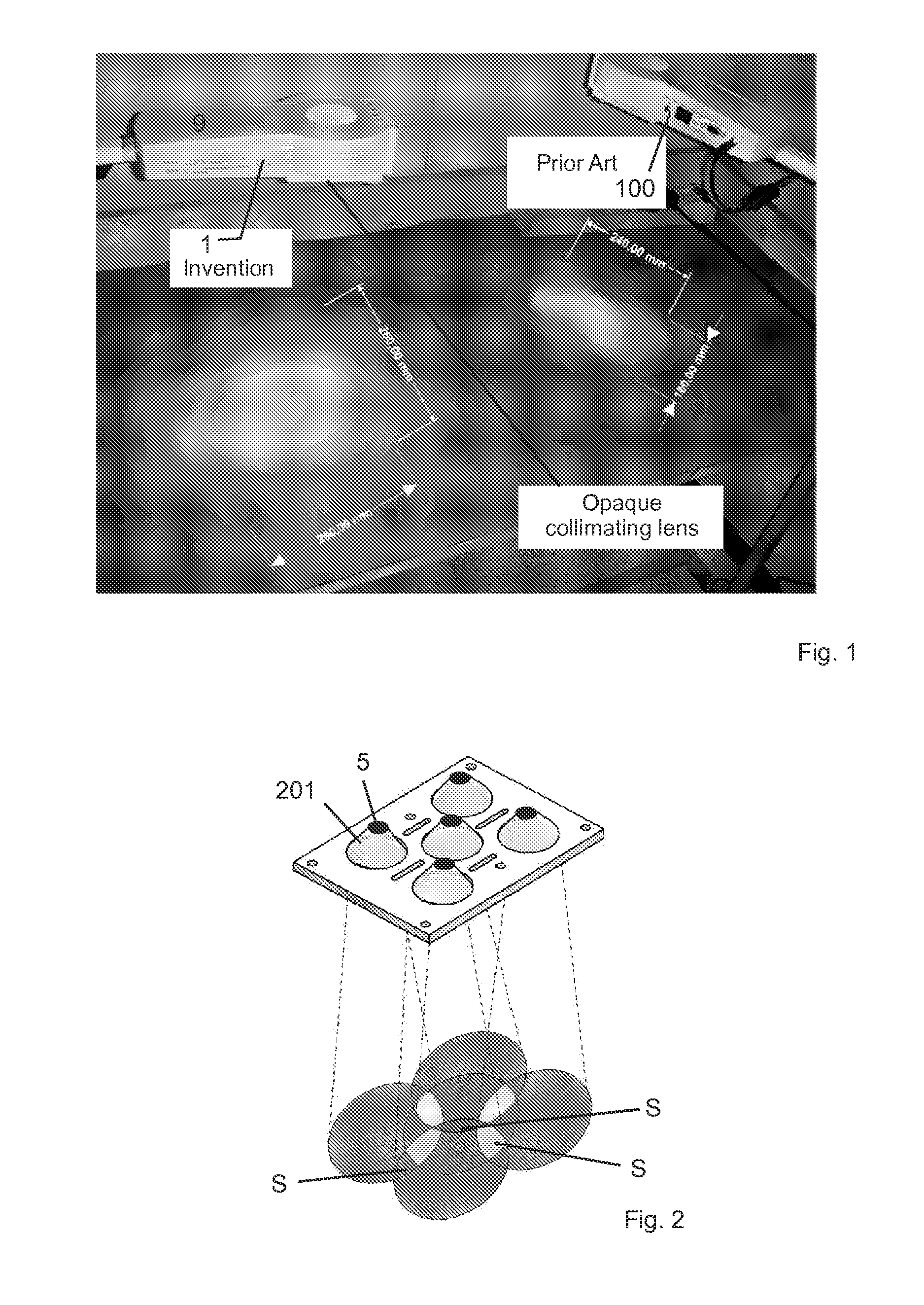Phototherapy treatment device
a treatment device and phototherapy technology, applied in the field of hospital equipment, can solve the problems of uneven radiation, affecting the efficacy of phototherapy treatment, and uneven spot irradiation on the patient's body,
- Summary
- Abstract
- Description
- Claims
- Application Information
AI Technical Summary
Benefits of technology
Problems solved by technology
Method used
Image
Examples
Embodiment Construction
[0071]The phototherapy equipment 1 of the present invention can assume a number of variations, but it has as a premise the fact that it emits irradiation / brightness in a substantially uniform manner throughout the patient's body, besides enabling easy and rapid variation of the area in which brightness / irradiance is emitted.
[0072]A comparison between the equipment 1 of the present invention and a phototherapy item equipment 100 of the prior art can be found in FIG. 1, clarifying that both use exactly the same source of illumination (the same identical five high-intensity LEDS).
[0073]One can see, with the present phototherapy equipment 1, the illuminated useful area exhibits oblong shape of about 260.00 mm×280.00 mm. The prior-art phototherapy apparatus 100, in turn, exhibits an illuminated useful area exhibits oblong shape of 180.00 mm×240.00 mm. Therefore, the advantage of the equipment 1 of the present invention is evident, which results, as will be better explained later, from th...
PUM
 Login to View More
Login to View More Abstract
Description
Claims
Application Information
 Login to View More
Login to View More - R&D
- Intellectual Property
- Life Sciences
- Materials
- Tech Scout
- Unparalleled Data Quality
- Higher Quality Content
- 60% Fewer Hallucinations
Browse by: Latest US Patents, China's latest patents, Technical Efficacy Thesaurus, Application Domain, Technology Topic, Popular Technical Reports.
© 2025 PatSnap. All rights reserved.Legal|Privacy policy|Modern Slavery Act Transparency Statement|Sitemap|About US| Contact US: help@patsnap.com



